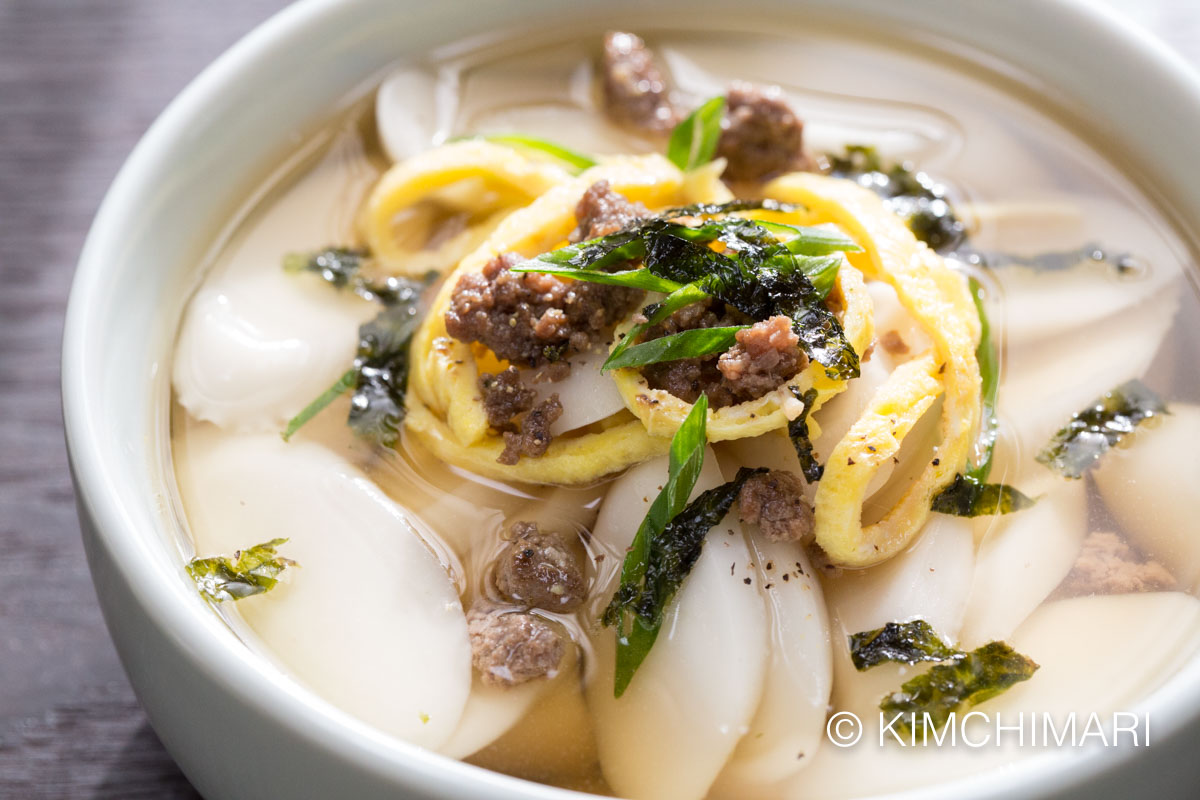Jump to What to Eat in Seoul | Travel Tips | Where to Stay | FAQ
Essential Tips for Visiting Seoul
Seoul is an exhilarating city that mixes ultramodern technology with rich cultural heritage. When planning your food adventures, here are my top tips to savor both the flavors and the city efficiently:
- Timing: Korean dining hours can be early; many popular eateries close by 9 or 10 PM. Plan to eat a little earlier than you might at home.
- Language: English menus are common in tourist-heavy areas but less so in local neighborhoods. Using Papago Translator helped me immensely in conversations.
- Cash vs. Card: While most places accept cards, street food vendors often prefer cash. Carry some Korean won for flexibility.
- Dietary Needs: Korean cuisine is largely based on meat and seafood, but many vegetarian options exist. Communicate allergies as “알레르기” (allergy) and specify ingredients.
What to Eat in Seoul: 12 Traditional Korean Dishes You Must Try
Spicy Korean Ramyun Topped with Processed Cheese

This combo might sound unusual, but adding a slice of processed cheese to spicy ramyun creates a creamy, comforting balance that every Seoulite loves.
The cheese melts over the fiery broth, turning it silky smooth. I first tried this at Myeongdong Ramyun Alley for less than ₩5,000 (~$4 USD), a budget-friendly must-have.
Korean Stuffed Rice Roll (Gimbap)
:max_bytes(150000):strip_icc()/__opt__aboutcom__coeus__resources__content_migration__serious_eats__seriouseats.com__2020__01__20200122-gimbap-vicky-wasik-24-f5ed1075f35846a29e0812ee053a1bf8.jpg)
Seoul’s answer to sushi, gimbap features rice and various fillings like pickled radish, egg, and ham rolled in seaweed. It’s perfect as a portable snack or light meal.
You can find delightful, fresh gimbap at Tosokchon Gimbap. My top tip: try the unique tuna or bulgogi variants for an extra punch of flavor.
Korean Savory Pancake (Jeon)

Jeon are savory pancakes made with ingredients like green onions, seafood, or kimchi, lightly pan-fried to crispy perfection. They pair beautifully with a dipping sauce of soy and vinegar. I had an unforgettable plate at the Gwangjang Market while wandering the bustling lanes—an authentic must for foodies.
Korean Soup (Guk)

Korean soups like Seolleongtang (milky beef bone soup) deliver soothing warmth and deep umami flavors. Perfect for chilly days or after a night of adventuring. I recommend Tosokchon Samgyetang, renowned for delicious ginseng chicken soup.
Korean Street Food

The street food scene is vibrant in areas like Myeongdong and Hongdae, offering skewered fish cakes, hotteok (sweet pancakes), tteokbokki (spicy rice cakes), and more. I found tteokbokki here especially addictive—it’s sweet, spicy, and utterly satisfying. A single serving usually costs ₩3,000-5,000.
Korean BBQ (Gogi-gui)

No Seoul food adventure is complete without indulging in Korean BBQ. You grill your own meat right at the table—usually marinated pork belly or beef. The best part is wrapping a juicy bite with lettuce, garlic, and ssamjang sauce. I loved dining at Maple Tree House, a top-rated spot offering quality cuts and excellent sides.
Dak Galbi from Chuncheon

This spicy stir-fried chicken dish originates from Chuncheon but is popular all over Seoul. It’s loaded with vegetables and rice cakes, typically cooked tableside. I found the perfect spot at Yoogane Dak Galbi—a must for a fiery meal that delights with every bite.
Korean Fried Chicken and Beer (Chimaek)

Korean fried chicken stands apart with its crisp, double-fried skin and flavors ranging from soy garlic to spicy chili. Paired with cold beer (“maekju”), it’s a beloved combo called “chimaek.” I enjoyed this experience at Kyochon Chicken, one of Seoul’s iconic chains.
Makgeolli (Korean Sparkling Rice Wine)

This milky, slightly sweet alcoholic drink made from fermented rice is perfect to complement savory dishes. I tried several varieties at Baesangmyun Brewery, appreciating how refreshing and subtly tangy they felt.
Patbingsoo (Korean Shaved Ice)
On hot days, patbingsoo is the ultimate treat: finely shaved ice topped with sweet red beans, fruits, condensed milk, and rice cakes. I found it sublime at Sulbing, a famous dessert franchise in Seoul with creative seasonal toppings.
Banana Milk
Though simple, sweet banana milk is a beloved Korean classic drink you’ll see everywhere, from convenience stores to cafes. It’s refreshing and nostalgic—I grabbed mine daily as a quick energy boost while exploring Seoul bustling streets.
Kalguksu (Knife-Cut Noodle Soup)
This comforting bowl of handmade knife-cut noodles in a rich broth is simple but profoundly satisfying. Often paired with kimchi, I tried it at Myeongdong Kalguksu, a historic spot known for its delicate noodles and perfectly seasoned broth.
Where to Stay in Seoul: Best Neighborhoods for Food Lovers
Choosing the right place to stay can elevate your Seoul food journey significantly. Based on my travels, here are neighborhoods that combine great food access, ambiance, and convenience:
- Myeongdong: Central and lively with endless street food stalls and international restaurants within walking distance. Perfect for first-timers.
- Hongdae: Youthful and creative, known for vibrant nightlife and eclectic eateries. Great for late-night chimaek.
- Insadong: For traditional vibes close to cultural sites and elegant tea houses serving traditional Korean sweets.
- Gangnam: Upscale, business district with refined dining options and stylish cafés.
- Itaewon: Diverse food scene, including many international foods alongside Korean classics, ideal for adventurous eaters.
Many travelers I met recommended Airbnb apartments for authentic local experiences, but quality hotels like the Shilla Seoul or Lotte Hotel Seoul offer excellent comfort and service.
Find Myeongdong Food Streets on Google Maps
Frequently Asked Questions About Eating in Seoul
What is the best time to eat Korean BBQ in Seoul?
The most popular time is between 6 PM and 9 PM, but Seoulites also enjoy late-night BBQ until midnight. To avoid crowds, try dining earlier or later on weekdays.
Are there vegetarian Korean dishes to try in Seoul?
Yes, dishes like Kimchi Jeon (kimchi pancake) and vegetable gimbap can be vegetarian-friendly. However, always confirm as many dishes use fish sauce or broth.
Is tipping customary at Korean restaurants?
Tipping is not common or expected in Korea; great service is standard and included in the price. Simply enjoy your meal and thank your server.
Do I need to know Korean to order food?
Not necessarily. Many restaurants have English menus and picture options. Using a translation app or pointing works well, especially in markets or street stalls.
Final Insider Tip for Your Seoul Food Journey
Don’t shy away from street food markets—they offer some of the most authentic and affordable culinary experiences. Also, try visiting traditional markets early in the day for the freshest ingredients and friendliest vendors. Plan your trip to include both iconic dishes and hidden gems to fully appreciate Seoul’s rich food culture.
WakaAbuja has made every effort to ensure that the information in this post was correct at the time of publication. However, we do not assume any liability caused by errors such as pricing, hours, or location details. Please consult official websites or social media pages for the most up-to-date information.




